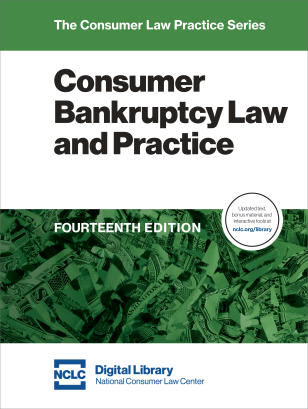Bankruptcy Dollar Amounts Going Up
Bankruptcy Code § 104(b) provides that the exemption amounts and other dollar figures in the Code are automatically adjusted for inflation every three years. The adjustments are based on changes to the Consumer Price Index for All Urban Consumers published by the Department of Labor, rounded to the nearest $25.
New dollar amounts take effect on April 1, 2019, and will apply to all cases filed on or after that date. Consumer debtors who may benefit from the higher dollar amounts, particularly with respect to exemptions, the means test, and chapter 13 debt limitations, may wish to delay a bankruptcy filing until the new amounts take effect on April 1, 2019. Despite popular belief, many lower-income bankruptcy filers can retain all or almost all of their assets in a chapter 7 bankruptcy. The new higher exemption limits means that it is even more likely that consumers can protect their assets in a chapter 7 filing.
New Exemption Amounts Protect More Consumer Property
Consumers in states that have not opted out of the federal exemptions may claim the bankruptcy exemptions under Bankruptcy Code § 522(d), as discussed in NCLC’s Consumer Bankruptcy Law and Practice § 10.2.1.1. The federal bankruptcy exemptions may also be claimed if the “safe harbor” in Bankruptcy Code § 522(b)(3)(A) applies due to the consumer’s domicile for exemption purposes, even if the state in which the consumer’s domicile is located is otherwise an opt-out state, as discussed in id. § 10.2.1.2. Exemption amounts refer not to the value of property, but to the consumer’s equity in the property after deducting outstanding credit secured by that property. The exemption amounts in Bankruptcy Code § 522(d) are doubled when a married couple files a joint case. 11 U.S.C. § 522(m).
For a state-by-state summary of state exemption amounts that apply to bankruptcies in certain states and that also protect property from seizure by judgment creditors, see NCLC’s Consumer Bankruptcy Law and Practice Appendix J. The same state-by-state survey is found in NCLC’s Collection Actions Appendix G.
As of April 1, the digital version of NCLC’s Consumer Bankruptcy Law and Practice will be updated throughout showing the new higher dollar amounts, both in the chapters and the Bankruptcy Code appendix (with footnotes showing the old dollar amounts). The following are the new exemption amounts:
| Homestead - § 522(d)(1) | $25,150 | |
| Motor Vehicle - § 522(d)(2) | $ 4,000 | |
| Household Goods - § 522(d)(3) | ||
| Per Item Limit | $ 625 | |
| Aggregate Limit | $13,400 | |
| Jewelry - § 522(d)(4) | $ 1,700 | |
| Wild Card - § 522(d)(5) | ||
| Any property | $ 1,325 | |
| Unused homestead under § 522(d)(1) | $12,575 | |
| Tools of the Trade - § 522(d)(6) | $ 2,525 | |
| Unmatured Life Insurance - § 522(d)(8) | $13,400 | |
| Personal Injury Claims - § 522(d)(11)(D) | $25,150 |


